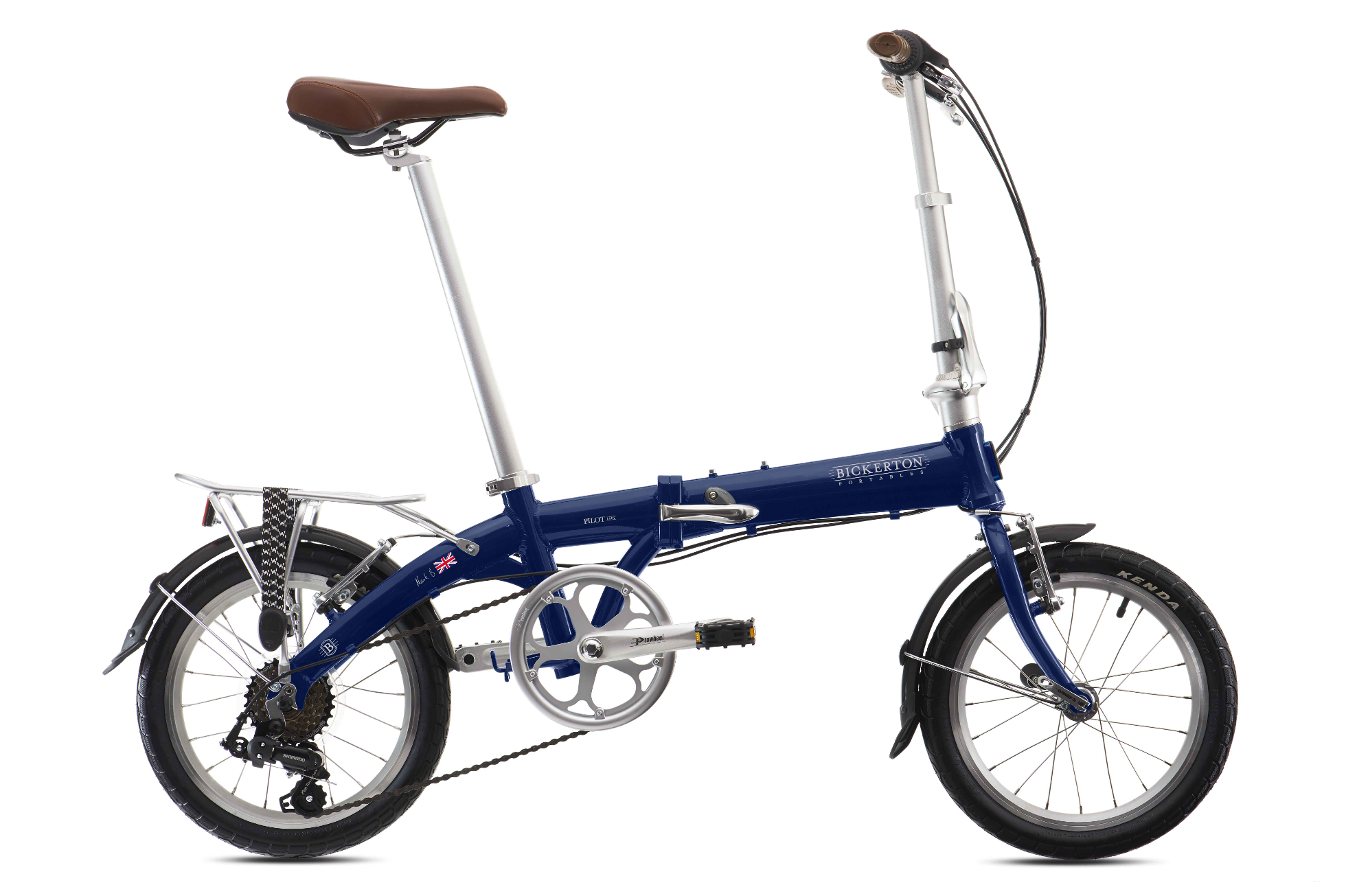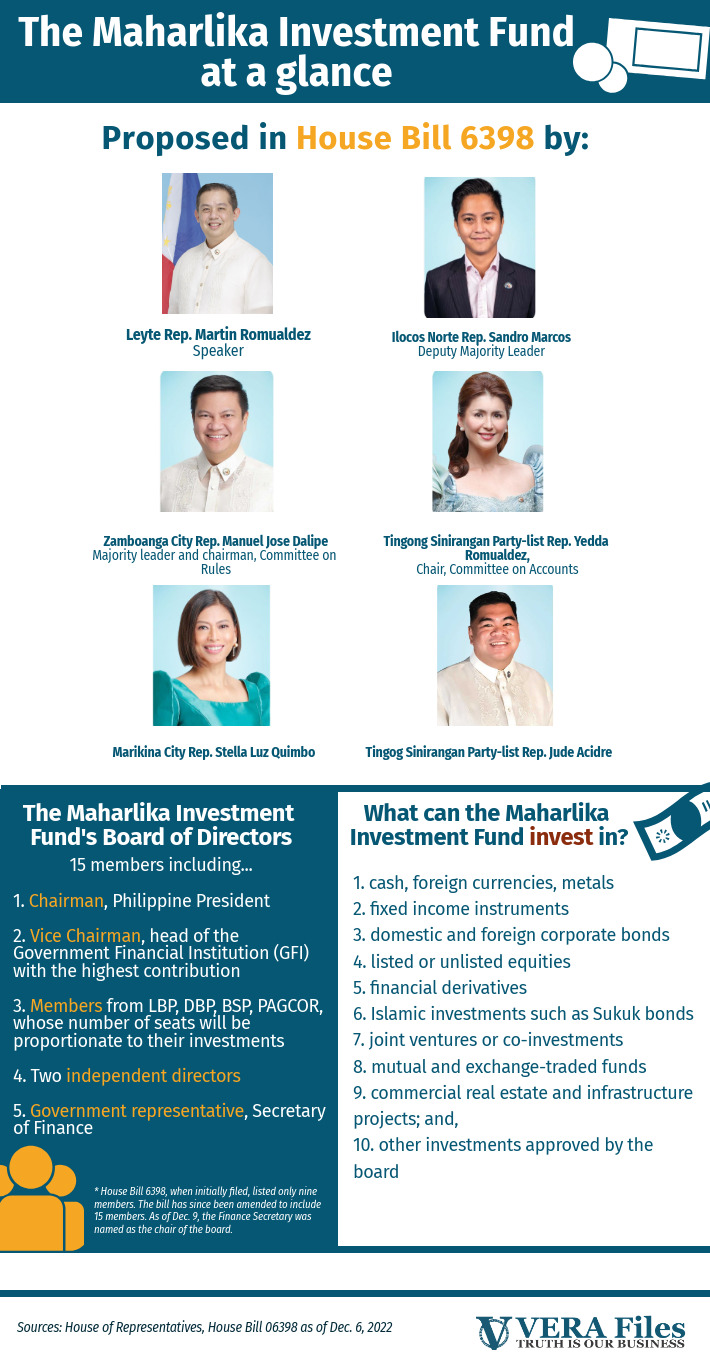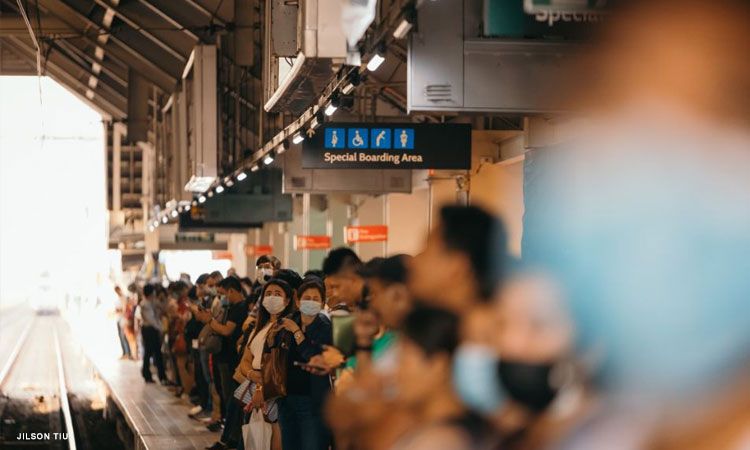First off, the name itself is sus (as young folks say). "Maharlika" is technically the feudal warrior class, but the ordinary Pinoy understands it as the nobility class -- or the alta and elite in our society. What's more shady though is its association with the elder Marcos: it's the title of the 1970 film which stars his mistress Dovie Beams and detailed the supposed (and fictional) exploits of Soldier Marcos' bravery during World War II -- a sham that's been proven several times over, but has been dusted and peddled anew to rebrand the Marcos years as the country's "Golden Age." (Interestingly, "Maharlika" has apparently been re-released in 1987, after the dictator has been ousted. The poster above is from the Video48 blog.) Who's behind this scheme? Now we get the younger Marcos' cousin Ferdinand Romualdez, his wife Yedda and another same party list cohort, Bongbong's son Sandro, a representative from Zamboanga who is probably is also a close "family" associate, and a surprise stooge in "Teacher" Stella Quimbo of Marikina---sooooo disappointing, btw--pushing the HB6398 proposal in Congress and that they want to certify as "urgent."
Thursday, December 15, 2022
Do we really need the Maharlika Wealth Fund? (Or thinking about pensions and retirement in 2022)
First off, the name itself is sus (as young folks say). "Maharlika" is technically the feudal warrior class, but the ordinary Pinoy understands it as the nobility class -- or the alta and elite in our society. What's more shady though is its association with the elder Marcos: it's the title of the 1970 film which stars his mistress Dovie Beams and detailed the supposed (and fictional) exploits of Soldier Marcos' bravery during World War II -- a sham that's been proven several times over, but has been dusted and peddled anew to rebrand the Marcos years as the country's "Golden Age." (Interestingly, "Maharlika" has apparently been re-released in 1987, after the dictator has been ousted. The poster above is from the Video48 blog.) Who's behind this scheme? Now we get the younger Marcos' cousin Ferdinand Romualdez, his wife Yedda and another same party list cohort, Bongbong's son Sandro, a representative from Zamboanga who is probably is also a close "family" associate, and a surprise stooge in "Teacher" Stella Quimbo of Marikina---sooooo disappointing, btw--pushing the HB6398 proposal in Congress and that they want to certify as "urgent."
Friday, May 27, 2022
Most Pinoys need 2-3 jobs to avoid poverty
Friday, January 1, 2021
Buying a Bike During Quarantine
 |
| Not my pic, but this is the Bickerton Pilot 1406 in Admiralty Blue. |
The country was in lockdown and there was no public transportation. We don’t own a car. I didn’t have a quarantine pass so even stepping out of the house was out of the question.
Buying supplies was difficult because one had to walk a long way just to get to the nearest market or grocery and the amount one buys was limited by what one could carry.
I was hoping that by the time the quarantine would be relaxed, having a bicycle would afford me greater mobility. Around June or July, I started looking at bikes for sale online. Initially, I had my eye on a three-wheeled one because—well, I had a trike when I was a kid, but as a firstborn, my parents weren’t too keen on having their precious daughter ride on two-wheels. It took a pandemic for me to learn this valuable life skill.
But because of limited supply and very high demand, bikes suffered from astronomical markups. Even the Japanese surplus bikes were selling for up to 100% or more of its pre-COVID price. What used to be an affordable sub-2k, you now have to shell out around 4k. These are generic bikes. For those with “brands” like a Jeep or Hummer or if the frame is made of alloy and not steel, be prepared to spend nearly 10k or more.
There was also a lot of bike theft going on, so I also knew I wanted a folding bike so I could keep the bike inside the house. My first plan was to get a Japanese bike first and learn to ride on that. That way, I wouldn’t be too afraid of scratching or damaging it when I inevitably crash it or if it gets stolen. (Always think of the worst case scenario, I suppose?)
Then I would graduate to a more decently priced brand, like a Dahon or a Tern or a Crius. These brands were going for ~15 to 20k. I also thought of getting an alloy frame if I could afford it. In my mind, maybe we would be back to regular by end of the year, and I would rather bike to work than go by public transport or pay for very expensive Grab rides. So that bike should be: (a) Foldable, (b) light enough for me to carry it up 3 flights of stairs, and (c) probably have 16 or 20 inch wheels, preferably the former.
Because I didn’t really know anything about bike mechanics, I thought it would be safer to look for slightly or gently used bikes. That way, it shouldn’t need too much repairs before one could use it. “Sasakyan na lang,” sabi nga ng online sellers. There were people selling bikes they took for a ride only a few times, and then letting it go because it wasn’t getting used anymore. The online marketplace was tough though. No sooner would a bike be posted for sale and then it’s off the market by the time you message the seller.
I chatted up a seller who put his 3 month old bike on the market because he wanted to exchange his classic for a “cooler” ride. However, his bike had 20 inch wheels, and consequently heavier. (Think by ~2 laptops heavier. I'm a small girl.)
Then I luckily spotted the 16 inch version of that bike posted the week before. The bike has only been used for 3 rides, and the longest was a spin around UP’s Acad Oval. Seller was helping his friend dispose it. I arranged to meet up at the Ayala Technohub, where one could indeed ride a bike, but also where most of the establishments were closed. I had a friend come and test ride the bike for me. I initially thought if I should still bargain a few hundred off the asking price, since I came to his side of the city. But my friend said given the bike was practically new—as in the wheels still had their “fur”— it was already a bargain. Without asking, the seller did give us a discount. Probably because he saw we were both girls and that he didn’t have enough money for change.
So that’s how I got my secondhand Bickerton Pilot 1406 in the middle of a pandemic.
(Soon: How I managed to fight “upgraditis,” or just getting the bare essentials for the bike.)
Monday, November 2, 2020
Pandemic Accounting
It's been quite a long while since I last posted. I still list down my expenses but the pandemic and the resulting quarantine sure did change how our time is spent.
When the lockdown was announced last March, there was still a month or so to go before the school term was over. So it was a lot of scrambling to suddenly shift to online learning. While blended learning was already a thing at the institutions I teach at, there was still so much to do and prepare at the time. It really was an emergency.
Then there was the uncertainty of whether schools would remain open for the rest of the year. A month was spent at preparing online learning materials. We had to learn how to adapt our existing materials and make it fit the distance learning mode, but to produce our own videos. Frankly, just planning the materials was already a herculean task, but also light, shoot and edit videos? While the school offered equipment and staff to help one shoot these things (on a limited scale, of course), practically no one wanted to venture out of the house then.
Expenses were lowest in April, May and June. It was difficult to even go out and buy groceries. We relied a lot on the ayuda sent by the barangay and the city, and went out to the market when necessary. Only one family member was allowed outside, and for us, that was my brother. We live in a family compound that was comprised of 60% senior citizens, so it really was difficult to go out and purchase necessary goods.
Then a bulk of the expenses during the summer months were gadgets: lights and microphones and other accessories. There were no webcams available, so it was either the stock cam on the laptop or figuring out how to use the phone for video. That time really wasn't enough, but we had to make do.
It's only because of the Halloween break that I'm able to breathe a little. There's still so much to do and prepare, but I wanted to see how I was doing financially. Colleges and universities aren't exactly doing well--enrollment is down, the annual salary increases are being negotiated down to a manageable level, we're still not assured of employment in the coming years or months. At one school, voluntary retirement packages were offered to (and taken by) full time faculty.
Mostly, I'm thankful that I still have a job, especially during that time when it was reported that nearly 45% of adults in the Philippines were unemployed.
In August, I bought a bicycle. That's why I almost used up all my salary for that month. I had been hunting for a bike since July since public transport was virtually non-existent. There was Grab, but that would be too expensive if taken regularly. Also: I bought a bike even when I didn't know how to ride yet, but I knew I had to learn if I wanted to have some sort of mobility. It was a gift to myself for my birthday. But that's another story.
In late August and all through September, one of the seniors in our care slipped and had an infected wound that led to the discovery of some heart and sugar level problems. Since there was limited mobility--no Grab at the time--we had to ask our barangay for help. There's an e-trike (like a pedicab) that could be borrowed, but there were so many people who also needed it so scheduling was tough. We found a clinic within town where we could take our elderly relative. Classes had already started then so my brother and I split medical clinic duties. Antibiotics and laboratory work were expensive. At some point, we asked some cousins to help chip in for the medical expenses.
During the quarantine, I was able to go out once to meet with a friend. It was weird to be outside. We picked a place that wouldn't be too crowded. We were the only ones at the restaurant and we sat at different tables. You still couldn't really hang out and talk. We were out for like an hour or so for the meal and then went home.
Last month, I myself had some sort of medical emergency. I slipped and managed to wound myself. I hit a wooden stick with a nail on it. Afraid that I would contract tetanus, I went to the emergency room of a hospital, where I was told that since I had tetanus shots (to go with anti-rabies shots) a year ago, that was still valid and I didn't need shots. I thought that was it and was getting ready to leave when they handed me the bill. I had to pay nearly 2 thousand pesos (!) for the consultation alone. A good thing it was covered by the health card.
There's still a lot of things we go without. I ran out of chips and chichirya, but the nearest grocery in town doesn't allow bikes (even if folded) inside and wanted me to park my bike in a non-secure area. There are many reports of bikes being stolen, and I wasn't about to risk my one big expense this year to thieves.
Mostly though, I am glad that our family is safe and healthy. We still have our jobs. I have an average savings rate of 30%+ and for that I am grateful.
How about you? How is everyone doing?
Wednesday, July 3, 2019
Five Years of Tracking My Net Worth
 |
| Andy Warhol's Dollar Sign (1981) |
- I started working two jobs. That means double the salary, which had to go somewhere.
- I finally opened a brokerage account after months of studying.
- I slowly transferred the cash (that's been sitting around in savings--I know!) into equities.
 |
| Story of my (stocks) life. |
Another bit of a throwback: I remember that period in July-August when the prices of stocks suddenly fell because of fears that Greece would default. I saw that sharp drop down but didn't buy anything because, well, I was a newbie. Still a lot of things of learn.
How is your 2019 so far?
Saturday, June 22, 2019
What We Can Learn About Workplace Safety from Eddie Garcia's Death
 |
| Image from Pep.ph |
 |
| Yeah, imagine if we do. |
Friday, June 7, 2019
Financial Wellness 101
 |
| Take the red pill or the blue pill. I got handed the red pill. |
Last week I attended this Financial Wellness seminar at work. I heard about it through e-mail and signed up for it. There were a few questions like whether you invest and in what instruments; if you subscribe to a time deposit, UITF, stocks, mutual funds, etc. A few days before the appointed date I got a notification telling us which room to go to.
On the day itself, it turns out that two banks were presenting their investment options. These were BPI and BDO. Then the room you were assigned to corresponded to the session with a particular bank. In short, they already chose for you. I got sent to the orientation hosted by BPI.
The "101" in the title should have clued me in as to the sort of content it would have. It was mostly an introduction to how to handle your finances, like prioritising savings over expenses (aka "Pay yourself first") and knowing your risk profile in order to know which investment instruments fit your timeline and capability.
What's surprising was that I didn't know the place I work in has an investment arm. But even more interesting were the results of the survey we were asked to fill out during the sign up. There were ~70+ respondents. About half already had investments, the other half did not invest. For the investors, the most popular form was insurance. Next was a tie between UITFs/mutual funds and land. Then time deposits, their own business and stocks.
For the non-investors, the top concern given for not investing is the lack of understanding of what investments are all about. Next, there's a tie between investment being "too expensive" and "too risky." Twenty-five percent said they don't have time. And a good chunk also said they are "afraid of new things."
 |
| Roughly 1% of the PH population invests in stock. A nice improvement, but we've got a long ways to go. |
The seminar took care of the knowledge gap in investing. A cursory look at the participants and I noticed that (a) they were mostly the office bound employees, (b) a sizeable tito and tita aged contingent but also (c) there were young people, which was heartening. After all, there was this report that the rate of Filipinos putting their money in stocks has gone up with over a million accounts with brokerages, with the bulk of the rise made up of retail investors at 97% and 21% of those are in the 18-29 age bracket.
Only one guy was willing to admit that he invests in stocks. When asked which stocks he held in his port, he quipped that he already sold his BPI. The investment advisor acknowledged it was the lowest in six years, so it might be a good bargain atm. The guy then said that he also has Jollibee. This then led to the vagaries of stock investing: that it might be affected by issues like Chicken Sad and Endo for Jollibee. But it's still all good if you hold on to your stocks in the long term.
 |
| What he said. |
Which brings us to the key takeaways from the seminar:
- Know your HERO, or Horizon, Experience, Risk Tolerance and Objective.
- Timing does not work but with the current market condition, now is the right time to invest.
- Diversification is important.




